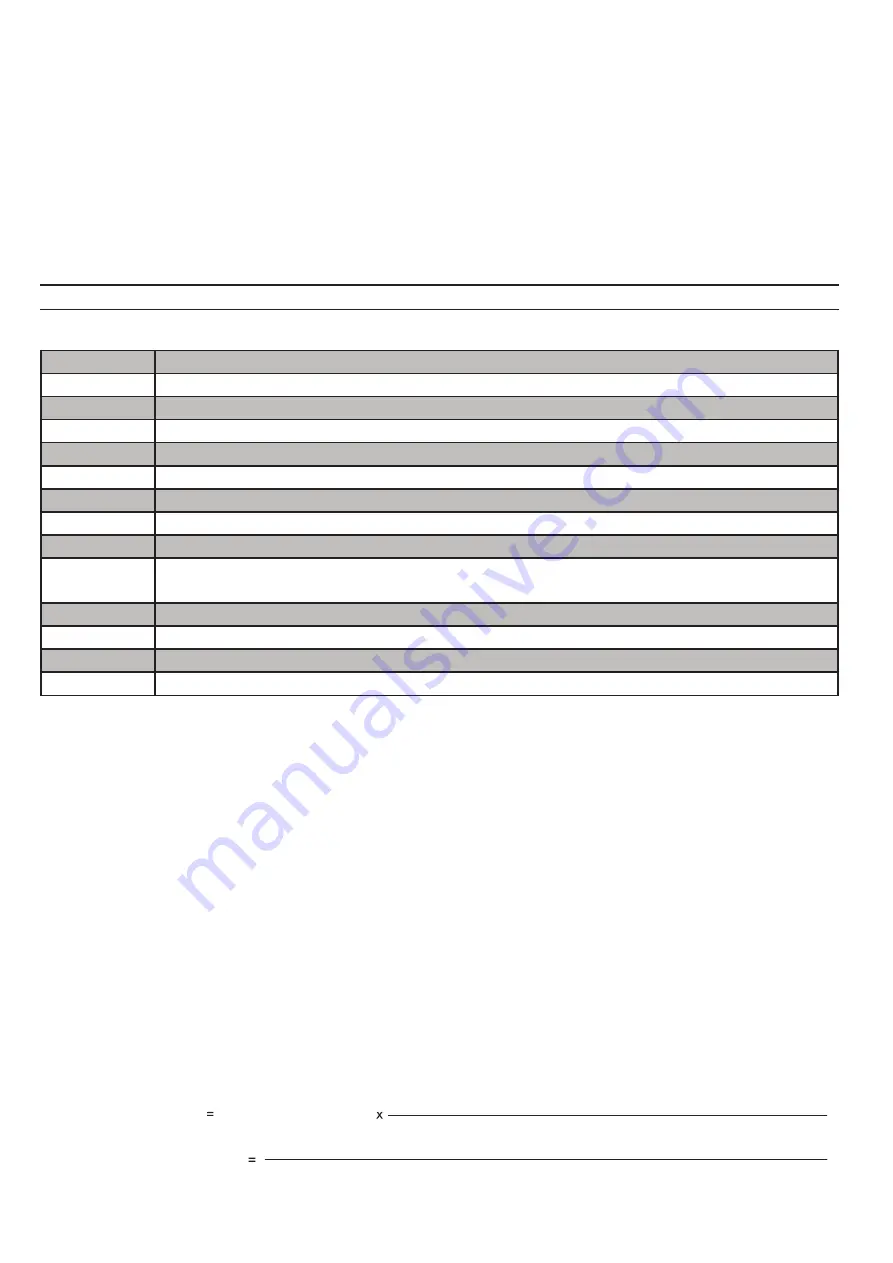
4-156
Rotational Auto-tuning (17-14)
(1) The parameter can only be set when rotational auto-tuning (17-00=0) or rotational auto-tuning combination (17-
00=5) is selected.
(2) VF type rotational auto-tuning (17-14=0) is best suited for unloaded induction motors
(3) Vector type rotational auto-tuning (17-14=1) is best suited for unloaded vector duty induction motors. This tuning
mode can be used for high speed motors. Use Vector type rotational auto-tuning if VF type rotational auto-tuning
(17-14=0) is unsuccessful.
(4) Vector type rotational auto-tuning (17-14=1) measures the motor no-loading current to avoid motor current
oscillation that can be present in V/F mode.
18 Slip Compensation Parameters
18-00
Slip compensation gain at low speed Default: VF:0.00, SLV: –
Range
【
0.00–2.50
】
18-01
Slip compensation gain at high speed Default: 0
Range
【
-1.00–1.00
】
18-02
Slip compensation limit Default: 200
Range
【
0–250
】
%
18-03
Slip compensation filter Default: 1
Range
【
0.0–10.0
】
Sec
18-04
Regenerating slip compensation selection Default: 0
Range
【
0
】
: Disabled
【
1
】
: Enabled
18-05
FOC delay time Default: 100
Range
【
1–1000
】
ms
18-06
FOC gain Default: 0.1
Range
【
0.00–2.00
】
Slip compensation automatically adjusts the output frequency based on the motor load to improve the speed
accuracy of the motor mainly in V/F mode.
The slip compensation function compensates for the motor slip to match the actual motor speed to the reference
frequency.
Slip compensation adjustment in V/F mode
18-00
: Slip compensation gain at low speed
The adjustment of slip compensation gain at low speed follows the below procedure:
1. Set the rated slip and the motor no-load current (02-00).
2. Set the slip compensation (18-00) to1.0 (factory default setting is 0.0 in V / F control mode)
3. For the operation with a load attached, measure the speed and adjust the slip gain (18-00) accordingly (increase in
steps of 0.1).
-If the motor speed is lower than frequency reference, increase the value of 18-00.
-If the motor speed is higher than frequency reference, decrease the value of 18-00.
When the output current is greater than the no-load current (02-00), slip compensation is enabled and the output
frequency increases from f1 to f2. Refer to figure below. The slip compensation value is calculated as follows:
[ Output current (12-18) - no-load current of Motor 1 (02-00) ]
Slip Compensation Value Motor rated slip frequency
[ Rated current of Motor 1(02-01) - no-load current of Motor 1 (02-00) ]
(Motor no-load synchronous speed–Motor full load rated speed)(N) x Motor Poles (P)
Motor Rated Slip Frequency (f)
120
















































